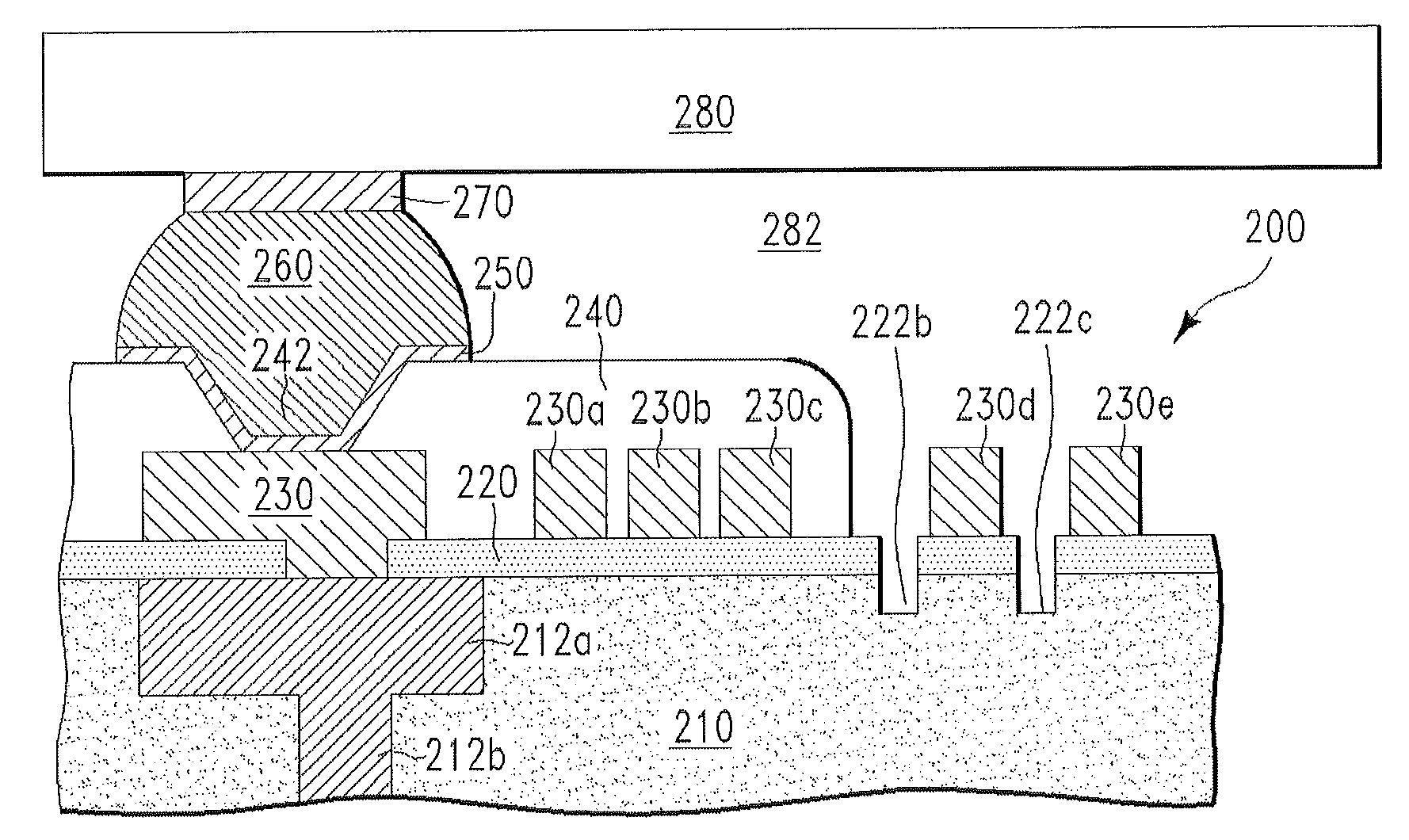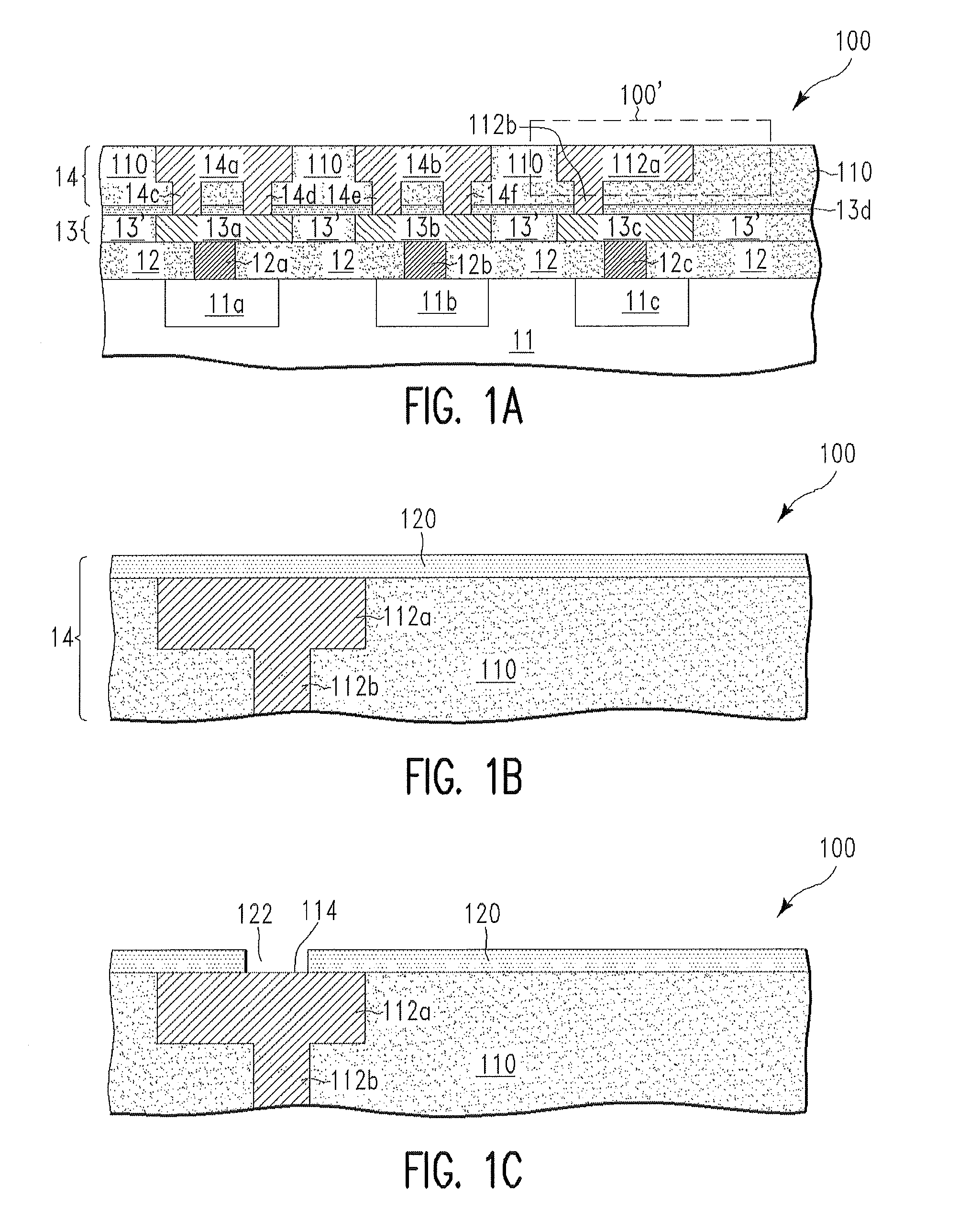Semiconductor chips with crack stop regions for reducing crack propagation from chip edges/corners
a technology of semiconductors and crack stops, applied in the field of semiconductor chips, can solve the problems of cracks likely to occur at chip edges/corners and propagate to the center of the chip, and achieve the effect of reducing crack propagation
- Summary
- Abstract
- Description
- Claims
- Application Information
AI Technical Summary
Benefits of technology
Problems solved by technology
Method used
Image
Examples
Embodiment Construction
[0007]FIGS. 1A-1H (cross-section views) illustrate a fabrication process for forming a semiconductor chip 100, in accordance with embodiments of the present invention. More specifically, with reference to FIG. 1A, the fabrication process starts with the semiconductor structure 100. The semiconductor structure 100 comprises a semiconductor substrate 11 and transistors (only source / drain regions 11a, 11b, and 11c of the transistors are shown for simplicity) on the semiconductor substrate 11. The semiconductor structure 100 further comprises a BPSG (Boro-Phospho-Silicate Glass) layer 12 and contact regions 12a, 12b, and 12c in the BPSG layer 12. The contact regions 12a, 12b, and 12c can comprise tungsten and are electrically coupled to the source / drain regions 11a, 11b, and 11c, respectively.
[0008]The semiconductor structure 100 further comprises (i) an interconnect layer 13 including (a) a dielectric layer 13′, and (b) metal lines 13a, 13b, and 13c in the dielectric layer 13′, (ii) a ...
PUM
 Login to View More
Login to View More Abstract
Description
Claims
Application Information
 Login to View More
Login to View More - R&D
- Intellectual Property
- Life Sciences
- Materials
- Tech Scout
- Unparalleled Data Quality
- Higher Quality Content
- 60% Fewer Hallucinations
Browse by: Latest US Patents, China's latest patents, Technical Efficacy Thesaurus, Application Domain, Technology Topic, Popular Technical Reports.
© 2025 PatSnap. All rights reserved.Legal|Privacy policy|Modern Slavery Act Transparency Statement|Sitemap|About US| Contact US: help@patsnap.com



